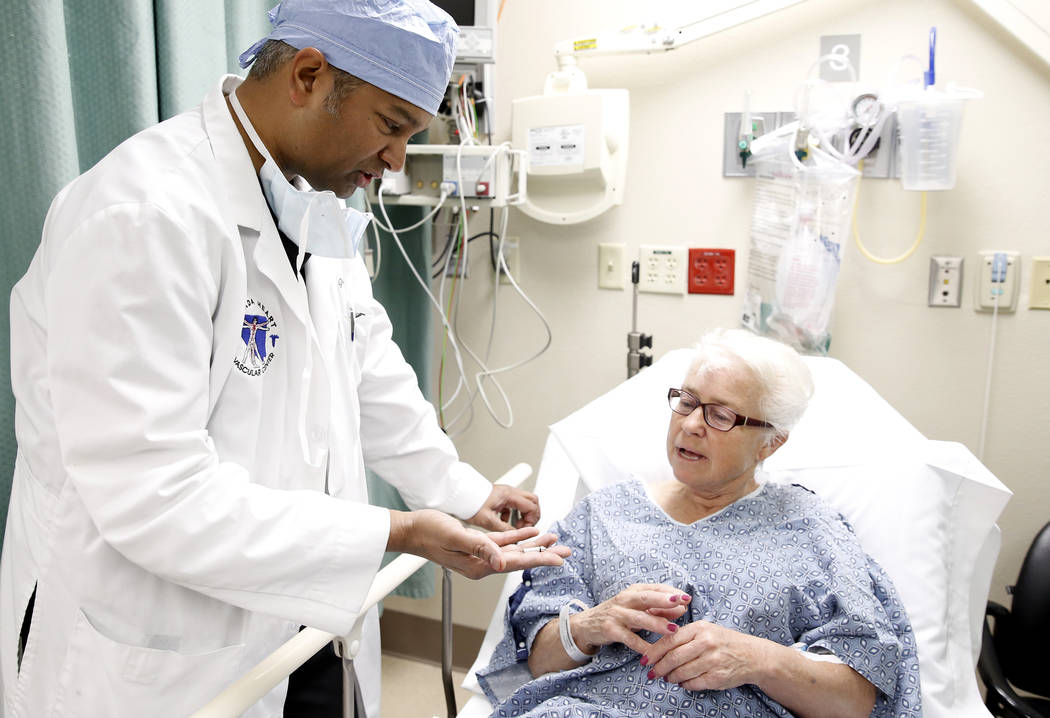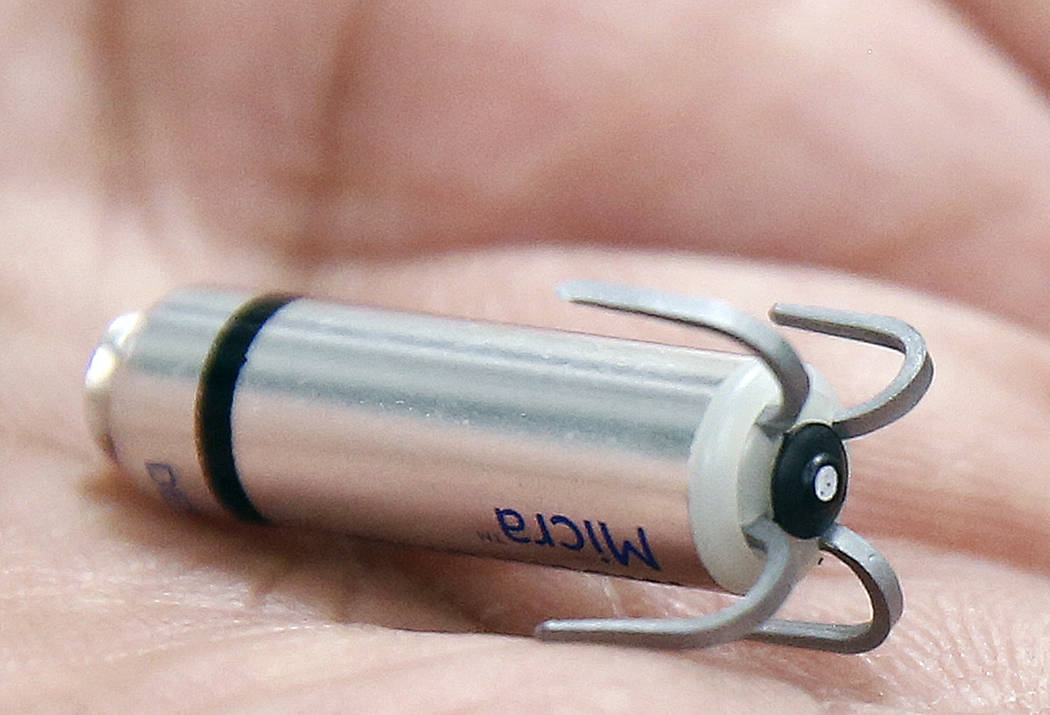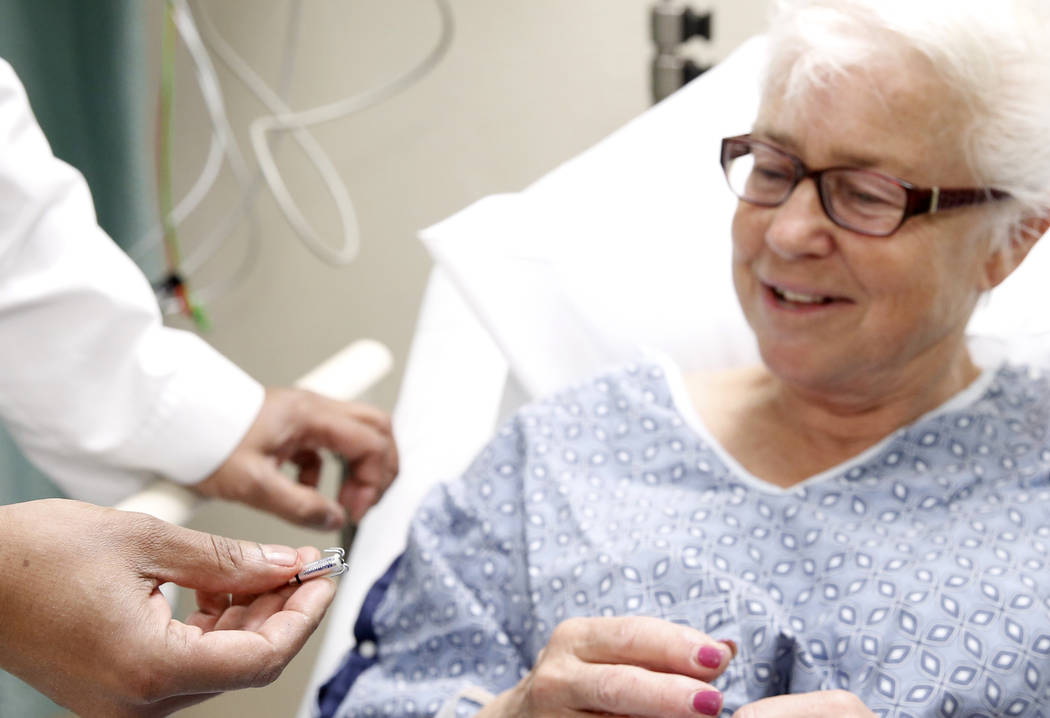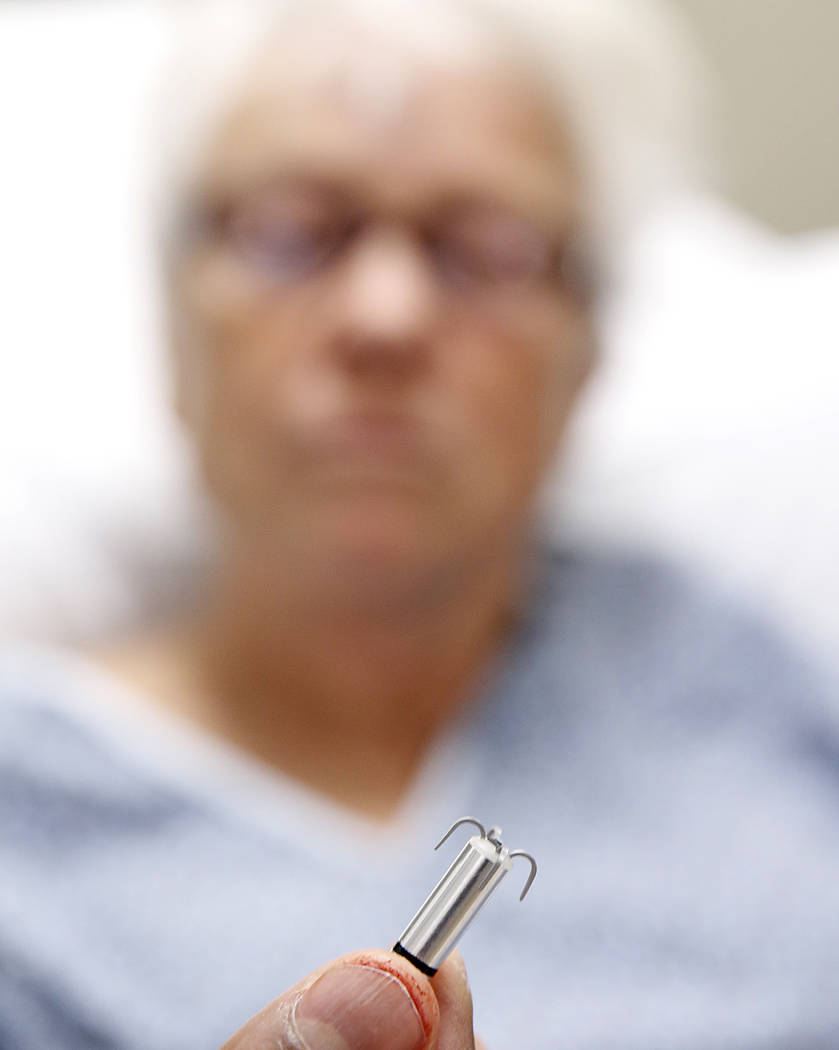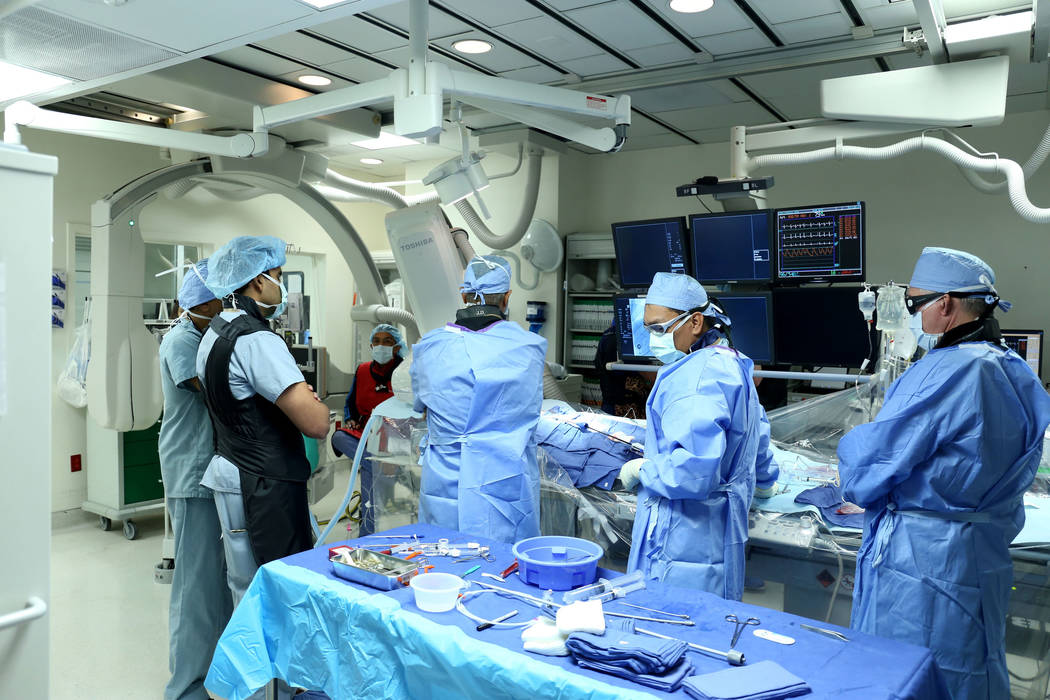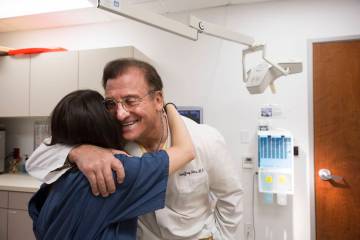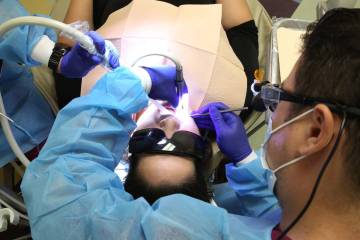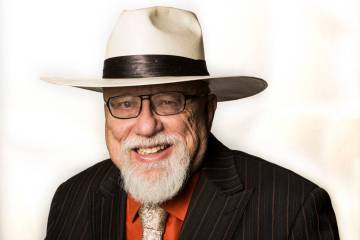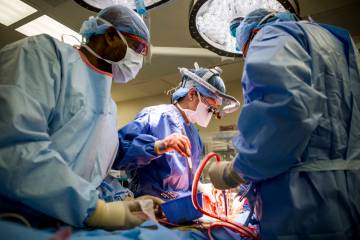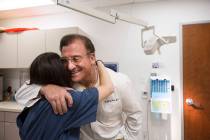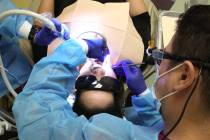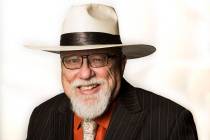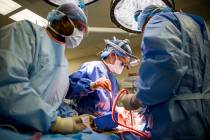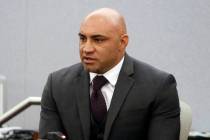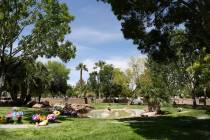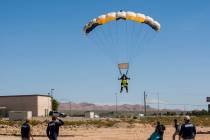World’s smallest pacemaker inserted for the first time in a Nevada patient
As 67-year-old Pamela Ham lay in a University Medical Center hospital bed last Monday morning, she was thankful she’s a baby boomer.
Advances in medical care gave her a chance to beat back heart disease, something that killed her father at the same age.
“It’s amazing what they can do now,” she said, smiling as her camera-shy husband, Richard Guy, stood nearby, his face etched with concern. “I was born at the right time.”
What brought Ham, who retired a year ago from a position with the Las Vegas Convention and Visitors Authority, to UMC was a condition known as atrial fibrillation, an irregular heartbeat that increases the risk of stroke and death.
Her problem was discovered after a walk in her Boulder City neighborhood left her so exhausted she immediately went to the doctor. Her heart also beat slower than normal.
Treatment for people today begins with medication and lifestyle changes — Ham’s disorder was discovered soon after her retirement — and increasingly involves a pacemaker, a device to regulate heartbeats.
“All my father could get was medication until his heart gave out,” Ham recalled.
Although external pacemakers had been around since the 1950s, it wasn’t until the 1990s that patients received implantable pacemakers with regularity, surgeries adding years to the lives of most recipients.
According to the Food and Drug Administration, implanted pacemakers increased in the U.S. from 95,000 in 1990 to more than 200,000 in 2002, a number remaining steady this century.
Until now pacemakers have been surgically implanted just under the skin in the chest, with wires called leads connected to the heart. A critical weakness of this pacing system is that the leads can wear out, break or become infected, requiring surgical removal.
And when the wires are being inserted under the collar bone, patients sometimes experience collapsed lungs.
Ham didn’t go the traditional route. Instead, Dr. Arjun Gururaj, a specialist in cardiac electrophysiology, performs a procedure never undertaken in Nevada.
Rather than cutting her chest open and creating a surgical pocket in which to implant the pacemaker, he makes a simple incision in her leg and snakes a catheter through an artery to her heart to implant a battery powered pacemaker.
The size of a multivitamin, the world’s smallest pacemaker is docked entirely inside her right ventricle.
A tenth the size of a traditional pacemaker, it is securely attached to the heart wall with the device’s prongs and delivers electrical impulses that pace the heart through an electrode at the end of the mechanism.
No wires are involved, and the procedure takes just 25 minutes, less than half the time to surgically implant the standard pacemaker.
“The Achilles heel of pacemakers has always been the wires,” Gururaj said after the procedure. “They’ve created infections. The batteries on these new devices will last 12 years and when it wears out, we’ll just implant another device. We don’t have to remove the other one. ”
The physician noted that not all people who need pacemakers can benefit from the Medtronic miniature pacemaker approved by the FDA last year. It stimulates just one chamber of the heart, and more than 75 percent of patients need dual-chamber pacemakers.
However, in the not too distant future, he expects a new generation of pacemakers to cover all patients’ needs.
Ham left UMC the day after her procedure with her heart operating properly.
“I wish my dad had had the same kind of medical advances available to him when he was alive.”
Paul Harasim’s column runs Sunday, Tuesday and Friday in the Nevada section and Monday in the Health section. Contact him at pharasim@reviewjournal.com or 702-387-5273. Follow @paulharasim on Twitter.



